Do you know that Google accounts for more than 70% of the total search market and about 85% of mobile traffic? With over 6.8 billion searches daily and about 2.5 trillion searches yearly, building a presence on Google isn’t optional. If you’re not on Google, you don’t exist online.
Search is where most buying journeys start. More so, It’s also the only sustainable and scalable source of free traffic to your website. Being on Google’s first page either through paid ads or effective SEO strategies is essential for your business.
However, the organic click-through-rate (CTR) is reportedly decreasing across the page. In May 2014, the top searches yielded a CTR of 38.7% but as of June 2019, CTR was 31.0%. This is partly due to most Google searches resulting in zero clicks. Increasingly, search queries are being answered by SERP features like the Direct Answer Box, Featured Snippet, or Knowledge Graph, which appear at the top of the page.
These zero-click searches result from Google’s new ability to provide brief copies or quick answers from websites on SERPs without the need to click on the headline.
The second reason for the decline in CTR is because many search results have poor headlines that do not attract clicks. Being at the top of the SERP is not enough; you must make your web page headlines enticing and clickable.
So, whether you just want more people to read your blog posts or you’re into the content marketing game, improving your headlines is the first step to increasing your CTR and driving more traffic to your website.
The content, length, grammar, and tone of your headlines determine whether a person will click on your headline or not. If your headlines don’t appeal to your target audience, your content will go unread. According to Copyblogger, 8 out of every 10 people, that’s about 80%, may see your headline, but only two out of every 10 people–less than 25%–will click to read your content.

This reinforces the need for writing persuasive, succinct, and emotional headlines. According to Melanie Duncan, for a headline to be clickable, it must be:
- Ultra-specific
- Unique
- Urgent
- Useful to readers
So, whether your website or blog ranks first or fifth on Google SERP, improving your CTR through clickable headlines is key to getting more traffic from Google–without investing in a dedicated marketing campaign or link-building.
In this article, I’ll teach you how to write persuasive, clickable headlines that improve your CTR and drive traffic to your website.
Before we get into the headline optimization tactics, I’ll briefly explain the anatomy of the search result page. Take a look at the example below, from the online eCommerce retailer, Beardbrand.

Every Google search result includes a title (headline), snippet, and site links (optional).
The title tag, which is your headline, is always the first thing that Google searchers/potential visitors see. It describes your website, blog, or web page. You have full influence over how you want your headline to appear in Google’s SERPs.
The snippet is a brief description of the content on the blog or web page. The way the snippet displays is based on the specific keyword query searched for in Google. But you still have some level of influence over how your snippet appears.

Finally, site links are the most authoritative results on Google search results. Google’s algorithm determines what is shown here and when. Though you can encourage site links when you build good site structure and navigation into your website.
Although Google sometimes changes how it displays search results, these three elements described above are almost always included.
Now, let’s get back to the business of writing clickable headlines.
Incorporate Keywords into Your Headlines

An essential part of attracting people to your website is creating a headline that helps your audience to easily find and identify your content. You must ensure that your headlines include the specific words that your audience is searching for.
In the case of the screenshot above, the keyword was “arthritis.”
Great clickable headlines must focus on the searchable keyword(s)—either short-tail or long-tail keyword(s). You can research keywords using Google Keyword Planner or Ahrefs.

This searchable keyword must also be included several times in your content body (especially in the first and last sentence), in your meta description, URL slug, subheadings, graphics, images, etc. These are standard SEO best practices.
Effectively incorporating keywords into your headlines and content enables your content to appear on top of the SERP, as well as makes your headlines more clickable as searchers will see that your headlines describe the content they are looking for.
Hint: Avoid using clickbait headlines as much as possible. While clickbait-style headlines may entice people to click, they won’t be qualified searchers. This is because clickbait headlines don’t usually incorporate the specific keywords used in your content and don’t match the searcher’s intent. I would recommend you use solid and honest keywords that reflect your content.
Need additional help improving your ranking on Google? The Cardinal Digital Marketing team is here for you; get in touch today!
Try These 3 Headline Formats
Although many different headline formats exist, there are some headline formats that get more traction and improve click-through-rates. Here are three headline formats that have proven to be effective at increasing CTRs.
List Post Headlines:

You’ve seen these types of headlines everywhere. And for good reason, they work. Headlines that contain lists arouse the reader’s curiosity while adding more value to the content.
According to OkDork, after infographics, list headlines get the most clicks.
It’s because list headlines give your audience the chance to quickly skim through the subheadings to see if there is something they might be interested in reading further. In the digital era, many people no longer read articles in their entirety. They’re skimming subheadings and bullets to quickly get the information they need. Lists articles make this easy to do.

Let’s look at another headline format:
“How-To” Headlines:
“How-to” headlines are another common format like list posts, and that’s because they also work well. Here are a few good examples:

One of the main reasons why people search for information on Google is to know how to do or learn something. So, if you step in and provide helpful “how-to” content on your blog or web page, you will appeal to that need and as a result, get more clicks.
Brian Clark once said about “how-to” headlines, “It’s no secret that ‘how-to’ articles … are some of the most sought after, linked to, and bookmarked content online.”
Hint: “How-to” headlines are undoubtedly the best choice if you write educational or instructional content that helps people learn how to do something.
Question Headlines:
These headlines are more focused on the needs of your audience and this implies that your audience will get answers to their questions if they click your headline to read your content.
These headlines are very helpful and relate to how people naturally search for answers. For instance, someone might think “is real estate a smart investment?” Instead of asking somebody, they’ll turn to Google to find the answer.
To use this approach effectively, you need to determine what your target audience’s questions are. You can find this out by conducting buyer persona research, soliciting customer feedback, or conducting surveys. Once you know what they’re asking, you can incorporate those relevant keywords and question phrases into your headlines.
When they see a search result that has their question within the title, they are more likely to click on it.
Hint: you need to be careful when using a question headline. To keep readers interested, you would need to start with an introduction that teases the answer to the question.
Here’s an example:

If you want to have a better opportunity of getting more clicks and traffic, give one of these headline styles a try. You’ll see better results than if you used a generic, boring headline.
Follow Headline Length Best Practices
Headline Analyser tool revealed that headlines with 55 characters get the most click-through rates. Though headlines that are at most 58 characters long are also acceptable.
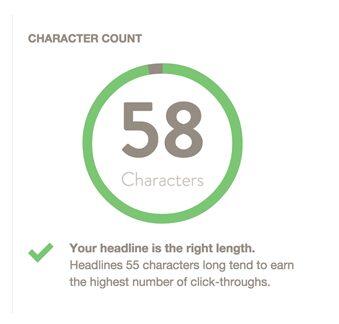
Most people focus on the headline wordcount, but this is not the only thing that matters. The number of characters in the headline is also important.
You can use the Headline Analyzer to see how your headline will appear in a typical Google search result.
Although Google previously limited its title tag to a width of 512 pixels, which is about 50 to 55 characters, it has recently updated the maximum length of title tags to 70 characters in search engine result pages.
Below is an example of a truncated headline.

When your headline is truncated, the complete headline content will not be viewable by searchers, who will scroll past your title even if it leads to useful web content.
Also note that if you will be using the same headline as your email subject lines, the average number of characters an email subject line can contain is 20, according to CoSchedule. If you input more than 20 characters, the excess characters will be cut off.
Try to include your keyword in the first 20 characters of your headline. That way, even if it gets truncated, the reader will still know what the content is about.
Do you need help refining your SEO strategy and implementing SEO best practices? Speak with Cardinal Digital Marketing team today!
Limit the Number of Words Used in the Headline
Headlines with 6 to 7 words usually get the best click results. However, there are different opinions on the number of words to use in a headline.
Nevertheless, as a standard best practice, the maximum amount of headline words you should use is 10.
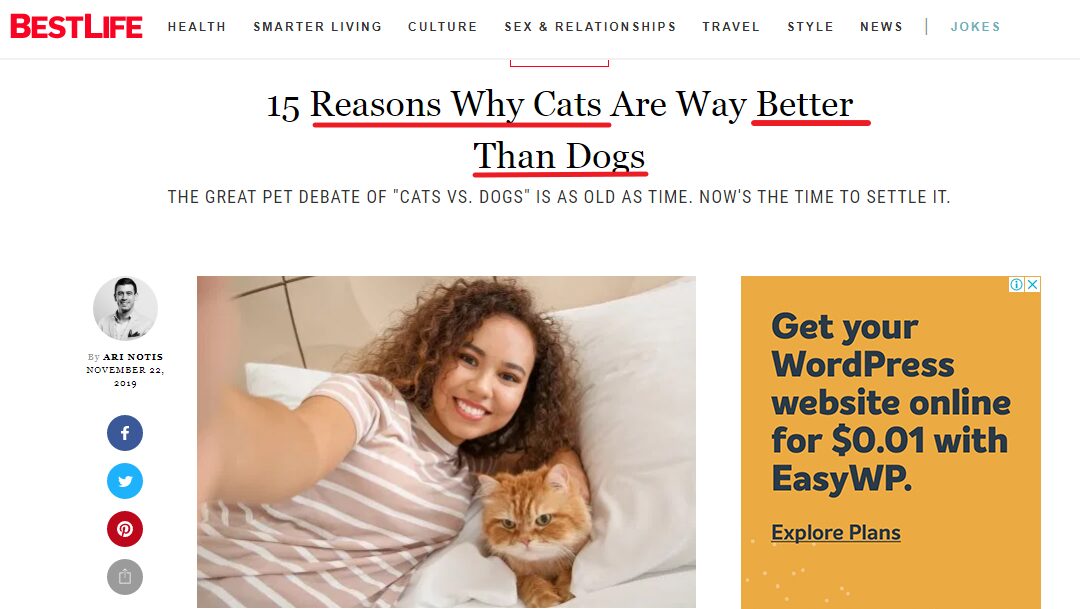
Irrespective of the number of words in your headline, 6 words are very important in every headline, these are the first three words and the last three words.
Most Google searches tend to read the first three words and the last three words of your headline. This is another big reason why your keyword should be within the first 20 characters of your headline.
Use Emotional Words to Increase CTRs
Does your headline contain emotional words? Is it positive or negative? Studies revealed that positive headlines with strong emotional words attract more clicks better than negative headlines. Dr Hakim Chishti researched that emotional words in headlines create very predictable responses. Headlines with strong emotions often tend to get more clicks.
CoSchedule also conducted an emotional value score on several headlines and realized that headlines with higher scores got more clicks and share.
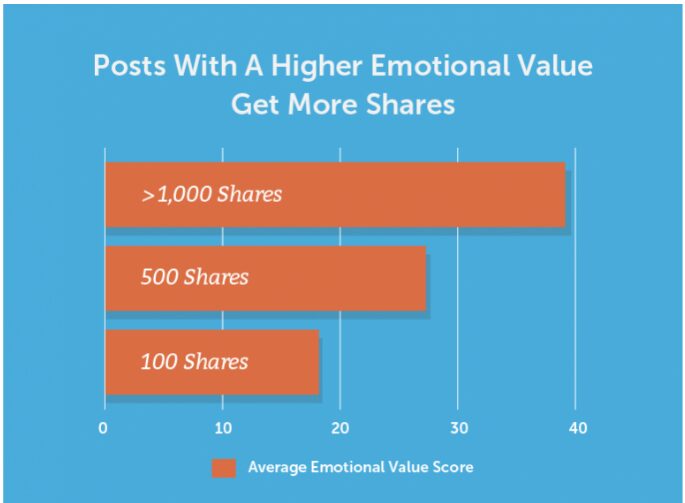
Now to create a good emotional headline, use words like “simple ways,”
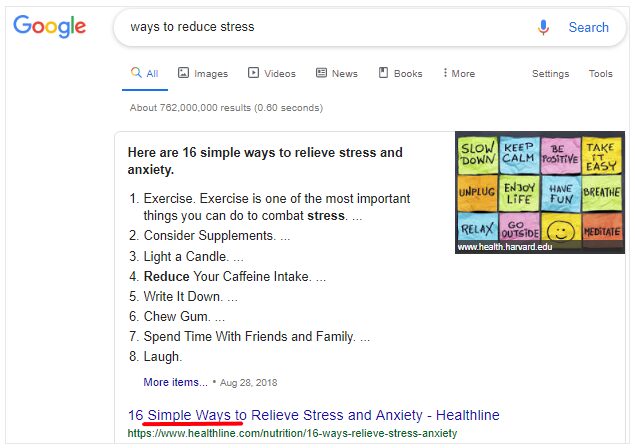
“Everything you need” to know.

“Never,” for example, “Never Follow These Content Marketing Strategies” or “10 Things Successful Bloggers Never Do.” Such a headline sparks curiosity. People naturally want to avoid making mistakes and learn what they should never do.
Another emotional word is “proven.” Considering the proliferation of fake and irrelevant content, information, and news on the Google search results, headlines with the word “proven” will more likely be clicked.

Consider the three headlines in the screenshot above, if you have limited time to spend online, you would most likely go for the third headline.
Another word is “powerful.” Using the word powerful in your headlines makes people believe that the content the headline introduces is highly impactful and effective.

Also, try out the word best in your headline. As humans, we always want the best. Using the word best in your headlines creates clickable headlines as the word “Best” tells the searcher that your content will give them better answers than any of the other search results. They don’t need to waste their time clicking on other search results when the best one is present.
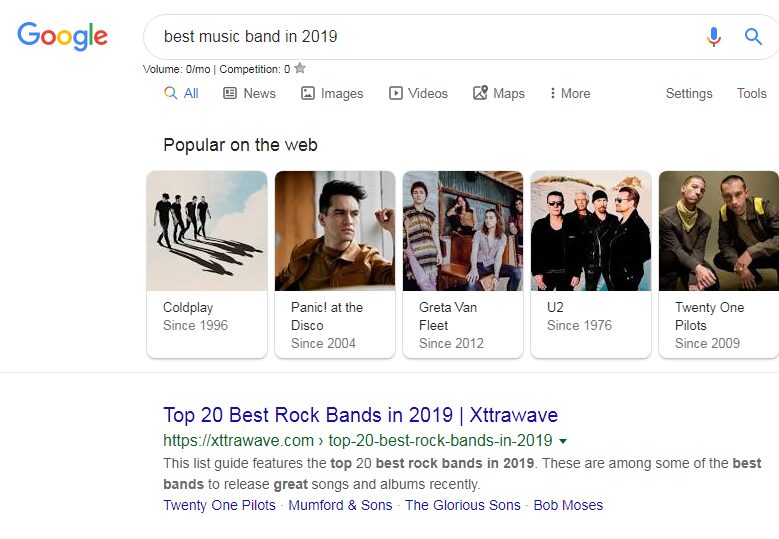
And finally, use the word “People” in your emotional headlines. People are always interested in knowing what other people think about a product or service.
So, using the word “people” in your headlines informs searchers that you have carefully done your studies and gathered information, which is a very good reason for them to click on your headlines.
Here’s an example from Impactbnd:
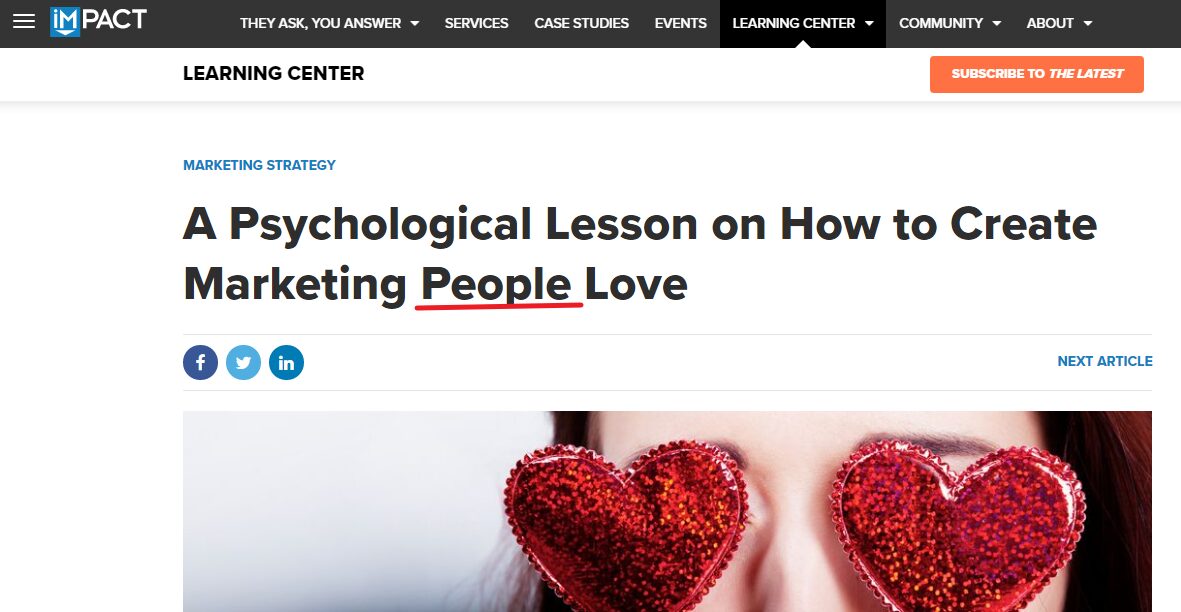
And yet another example from Mark Manson:

Conclusion
If you want to know if your current headlines are better and clickable or need some tweaking, CoSchedule’s headline analyzer can be helpful. Just enter your headline and the app will provide you with helpful recommendations that address everything I just shared in this article.
To conclude, keep your headline short and well-structured and incorporate your keywords within the first 20 characters. Then, take what you learn from this article, and combine it with proven SEO best practices and boom, you’ll improve your CTRs and drive more traffic to your website.
If you need help refining your content marketing strategy, reach out to us. We can help you refine you create content that ranks well and generates traffic through the use of clickable, persuasive headlines.

